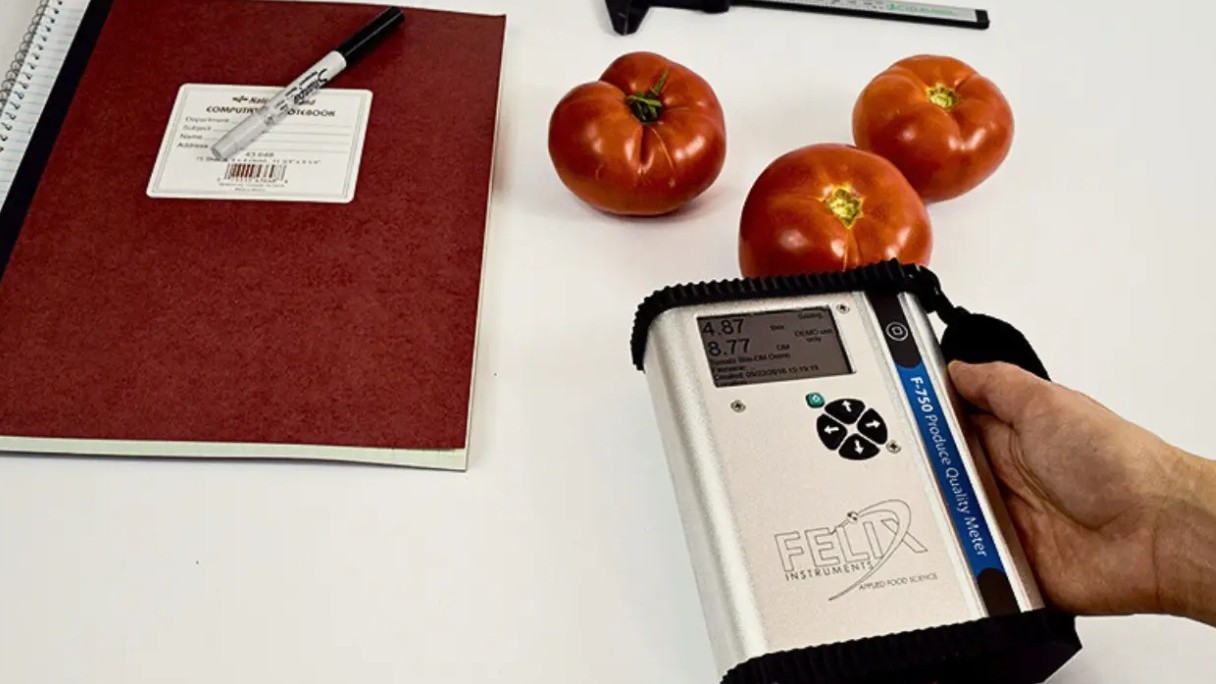News
Fusarium infection on sweet corn postharvest quality
F. graminearum and F. verticilloides infections caused significant darkening of kernel color and a marked increase in surface fungal spore counts; critical time points for visible deterioration were 24 hours post-inoculation for F. graminearum and 36 hours for F. verticillioides

Redaccion
Sweet corn is highly susceptible to infection by Fusarium graminearum (F. graminearum) and Fusarium verticillioides (F. verticillioides) during storage, which substantially compromises its nutritional quality and economic value.
However, the specific effects of F. graminearum and F. verticillioides on sweet corn quality during postharvest storage remain poorly understood.
This study systematically explored the effects of F. graminearum and F. verticillioides infection on sweet corn quality by evaluating the changes in color, hardness, weight loss rate, malondialdehyde (MDA) content, surface fungal spore count, soluble protein content, and soluble sugar content.
Results
Results indicated that the critical time points for visible deterioration were 24 hours post-inoculation for F. graminearum and 36 hours for F. verticillioides.
Compared with the control group, both infections caused significant darkening of kernel color and a marked increase in surface fungal spore counts.
Notably, F. verticillioides infection was associated with a significant increase in MDA content, indicating enhanced oxidative stress in infected kernels.
These findings elucidate the mechanisms of pathogen-induced quality degradation in sweet corn and provide a scientific basis for preserving and enhancing the value of agricultural products and ensuring food safety.
Introduction
Sweet corn (Zea mays L. saccharata Sturt), also known as fresh corn or glutinous corn, refers to young corn varieties harvested at the milk stage. It is widely appreciated by consumers due to its thin pericarp, abundant juice, crisp and tender texture, and high nutritional value [1].
Moreover, its fruitlike characteristics render it suitable for both fresh consumption and culinary use. Sweet corn has become a globally important economic crop, primarily cultivated in the United States, France, South Korea, and the northeast regions of China.
It is reported that China has surpassed the United States in sweet corn production, with a planting area of 5.3 million hectares, making itself as the world’s largest producer and consumer. The country has developed a comprehensive planting and processing system, and playing a crucial role in ensuring food security and promoting agricultural economic development [2].
Spoilage and short shelf life
Sweet corn is highly susceptible to spoilage during storage due to its high moisture and soluble sugar content [3]. When stored under ambient conditions, sweet corn remains fresh for only 2–3 days [4].
Moreover, its shelf life is inherently short, limited primarily to the milk ripening stage, which lasts approximately 3 to 7 days [5,6].
During this stage, the moisture content and levels of soluble sugars–such as sucrose and glucose–reach their maximum. However, postharvest physiological
metabolism in sweet corn is highly active, with respiratory intensity significantly exceeding that of field corn, resulting in rapid degradation of key nutritional components, including vitamin C and lutein [7].
Additionally, the high moisture and sugar content render sweet corn particularly
vulnerable to various pathogenic microorganisms during storage, leading to mold growth and spoilage [3].
Pathogen-infected sweet corn not only suffers substantial losses in quality and yield [8], but may also produce mycotoxins during fungal proliferation, which can induce acute or chronic toxicity in humans and animals [9], thereby posing a significant risk to public health.
Interest to develop postharvest strategies
These challenges severely restrict the postharvest circulation and marketability of sweet corn.
Therefore, developing effective strategies to suppress the onset and spread of postharvest diseases in through optimized prevention and control measures has become a critical priority in contemporary agricultural and food science research.
Maize ear rot is one of the primary fungal diseases affecting the late growth stage and postharvest storage of corn, and it is a prevalent disease in maize-producing regions worldwide, resulting in substantial yield losses and significant deterioration of corn quality [10].
Fusarium verticillioides and Fusarium graminearum, main pathogens
The disease is caused by infection with various pathogens, either individually or synergistically [11]. Global studies have consistently identified Fusarium verticillioides (F. verticillioides) and Fusarium graminearum (F. graminearum) as the major pathogenic species [12–17].
These filamentous fungi can proliferate rapidly under conditions of 25-35°C and relative humidity exceeding 85%. Furthermore, they are capable of persistent postharvest infection through mechanical wounds or latent mycelial structures, leading to the development of water-soaked lesions on kernels and the formation of mold layers.
This results in marked deterioration of sensory quality, including textural softening and other undesirable changes [18].
More seriously, F. graminearum and F. verticillioides produce harmful secondary metabolites, including the mycotoxins deoxynivalenol (DON), zearalenone (ZEA), and fumonisins (FB1) [19,20].
These toxins contribute to the accelerated deterioration of grain quality, such as impaired starch gelatinization properties and disrupted sugar metabolism.
Of particular concern, consumption of food contaminated with ZEA by pregnant animals, including humans, may result in miscarriage, stillbirth, or fetal abnormalities [21].
Moreover, excessive intake of ZEA can lead to mycotoxicosis, commonly referred to as "fungal poisoning", posing a significant health risk to both animals and humans [22].
Aim of the study
This study investigated and documented the infection process of F. graminearum and F. verticillioides in sweet corn under normal storage conditions at 25°C, aiming to identify the critical time points of infection.
By evaluating color, hardness, weight loss rate, malondialdehyde (MDA) content, surface fungal spore count, soluble protein content and soluble sugar content, the changes in sweet corn quality before and after infection were systematically analyzed.
This research is intended to provide a theoretical foundation for controlling and preventing grain quality deterioration in sweet corn during post-harvest storage due to mold infection.
Sources
Effects of Fusarium graminearum and Fusarium verticillioides Infection on Sweet Corn Quality During Postharvest Storage
Yihan Xue, Shaoyue Liu, Qianzi Nie, Xinru Zhang, Yan Zhao, Yanfei Li
and Haoxin Lv
https://www.preprints.org/frontend/manuscript/2d05111df77325c4f54d51eac07c6c20/download_pub
Picture
Maíz dulce / Tatonka F1 - 10 semillas
https://www.jungepflanzen.de/es/maiz-dulce-tatonka-f1-10-semillas-4979?srsltid=AfmBOorH2ZJJCiSQI6dDueZQEfsbbn04y3cq0KOIJPHrINt4g42F0wzl












